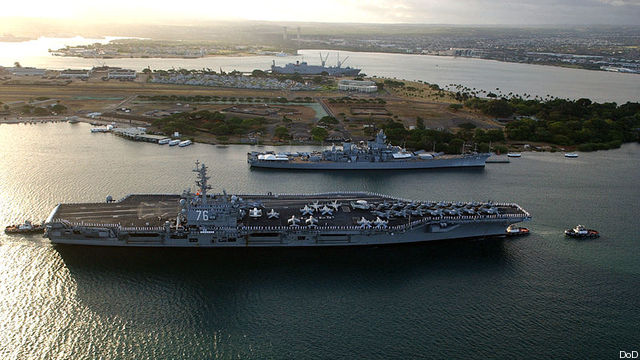Transformation Resurfaces As Pentagon Gropes For Strategic Answers
Posted on

WASHINGTON: Transformation is back! Sort of.
The pursuit of transformation, affiliated with the concept known as a Revolution in Military Affairs, became associated with the failed tenure of former Defense Secretary Donald Rumsfeld and was publicly dropped as a central organizing concept of the military for that reason.
The decade-long pursuit of counter-insurgency warfare didn’t help transformation’s currency much either, as an RMA focuses on building a military capable of meeting and defeating an enemy in full-throated combat. On the other hand, COIN is focused on coopting the population and as much of the insurgency as possible while engaging in whatever combat may be necessary.
But the centrality of AirSea Battle and comments by various military leaders have raised the possibility that transformation was regaining its centrality in the debate about what America should best do to prepare for war and what kind of war we should prepare for.
During breakfast last week I asked the man leading the Air Force’s efforts on the Quadrennial Defense Review, Maj. Gen. Steven Kwast, after he used the term transformation several times if it was back. The answer was yes. But it was a qualified yes, so I checked with one of the, er, fathers of transformation: Andy Krepinevich of the Center for Strategic and Budgetary Assessments, who is close to Andy Marshall, head of the Pentagon’s Office of Net Assessment.
Asked flat out whether transformation was back as a central organizing principle for the Pentagon, Krepinevich — who literally wrote the paper on transformation, “The Military-Technical Revolution: A Preliminary Assessment” in 1992 — said no. Pressed further, he says: “I would probably prefer to give a not-sure answer.” He argues with his usual precision that transformation per se — roughly defined as the Pentagon’s efforts to actually implement a Revolution in Military Affairs — may not have ever really happened, so it’s hard to say it’s back.
(Here’s one of the shortest definitions of an RMA I could find: “The idea of an RMA is that technological developments sometimes make possible a qualitative change in the nature of warfare. Examples include the advents of aircraft carriers, blitzkrieg warfare, and nuclear weapons. An RMA usually involves major changes in technology, doctrine, and organization. RMAs often render obsolete some previous forms of warfare, as when aircraft carriers supplanted battleships. In the context of the early 1990s, it seemed evident to some of us that profound changes were possible because of precision fires, stealth technology, and information systems.”)
However, if you trace the concepts from Krepinevich’s original transformation paper’s focus on precision weapons and deep strike to the current focus on anti-access/area denial (A2/AD) and its child, AirSea Battle, then there really is a pretty unbroken line.
Andy argues that if China is our main concern — and he thinks it is — and our pivot to the Pacific is real, we must craft a force structure capable of acting effectively against a competitor who has targeted our very strengths — precision weapons and networks. If you want to compare this problem with the one we faced with the Soviet Union — how do you deter a prime competitor — he says we need to delineate our goals first.
“Do you accommodate a shift in the military balance in an area we have said is vital to our national security since World War II? If you don’t, that has huge implications, to Japan building nuclear weapons and to other countries in the world wondering about our intentions,” he argues. “If I were Adm. Locklear, I’d want some answers. Am I supposed to do it by defending the first island chain? If not, am I supposed to blockade them? What am I supposed to do?”
Better connecting sensors and weapons across services and making those services cooperate more closely, as AirSea Battle seems to be focused on, is not enough to handle those larger questions. But that approach certainly is in the best tradition of transformational efforts identified in the past.
So keep your eyes on AirSea Battle and on the QDR. And, most importantly, track the budget debates on the Hill. Simply put, without some new money, the services are likely to stick with what they’ve got and try to make incremental gains instead of trying to forge truly new ways of war. Unless someone upstairs pushes them hard in a different direction.
Subscribe to our newsletter
Promotions, new products and sales. Directly to your inbox.
